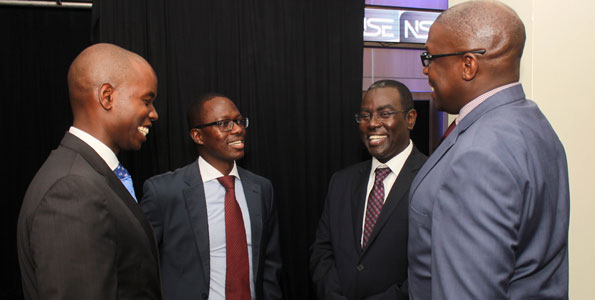Innovation: the
inevitable journey for contemporary products and services.
Today, as you read through any intellectual document, be it a
business proposal, a column in a magazine or a pull out in a newspaper, I can
bet that you will find this term ‘innovation’. This makes me marvel if the
worlds’ new generation has run out of choice of words or if there is really a
decent reason for the ‘abuse’ of this
one word ;innovation.
The world is rising fast in invention. Modernism is checking
in at a speed that if you do not keep par and embrace change then you are left
behind. According to Oxford dictionary: Innovate means to make changes in something
established, especially by introducing new methods, ideas, or products.
A stream of questions therefore arise
in the mind of a reader. Why is it significant for us to make changes in the 21st
century? Why is it important to introduce new ideas or products in the consumer
market? Ultimately, why is it important be innovative?
There are new ideologies and concepts being propagated every
day, time in the tech world is lapsing at an incredible rate. Just by taking a
look around where you stand or sit, you will notice that you have either a
phone, television, radio or if you are at home, a refrigerator placed somewhere
strategically in the Kitchen. Have you ever wondered what your life would be without
this appliances?
Imagine being born in the 1970’s in Kenya, very few families
(maybe none) had access to any of these appliances. The closest they could
experiences these gadgets was through factual films played at the shopping
center or at the home of an educated chap who just came back from abroad. In
that time, that moment, all these pictures were just like science fiction. No
one would have never dreamt of it being a reality someday.
In our day, tech companies have continued pushing boundaries in
creating smart, future-oriented and eco-friendly gadgets that are competitive
in the market. Multinationals such as LG Electronics have made it possible for
consumers to communicate by working on smartphones and tablets that are far much
more capable than devices we saw in the movies fifteen or twenty years ago.
Imagine the dating scene in 80’s or even in the 90’s.When
using telephone booths was the order of the day. And it was not easy especially
if you had to make a reverse call so that the receiver on the other end could
call you back. If you were in the village, it was even more difficult. Boys had
to throw stones on top of the maidens’ roof as an alert signal .These hard
times are well behind us. With smart phones and user friendly devices, connectivity
is no longer an issue, it only takes a speed dial to reach out to loved ones.
That notwithstanding, innovation was pushed to the limits
last year when LG Electronics introduced to the market a refrigerator that you
can communicate with using HomeChat on a cellular phone. Even when you are not
at home, you can check the stock in your fridge and take inventory of food
enabling consumers to know what to replenish. With the use of HomeChat app,
users are able to schedule the cycle of their washing machine and even give
specific instructions to their oven to heat up food before getting home.
There is a notable future-oriented concepts and designs
coming up in the 21st century, only future will tell if increased
technology will lead to appliances that can interact with each other and even
cook for us our food. Who knows, innovation can even result to a phone that
will heat or cool food, and maybe do all other house chores at the same time. I
know it sounds absurd but that is where this term innovation is taking us to!











